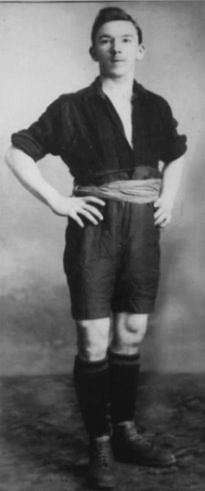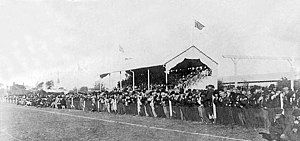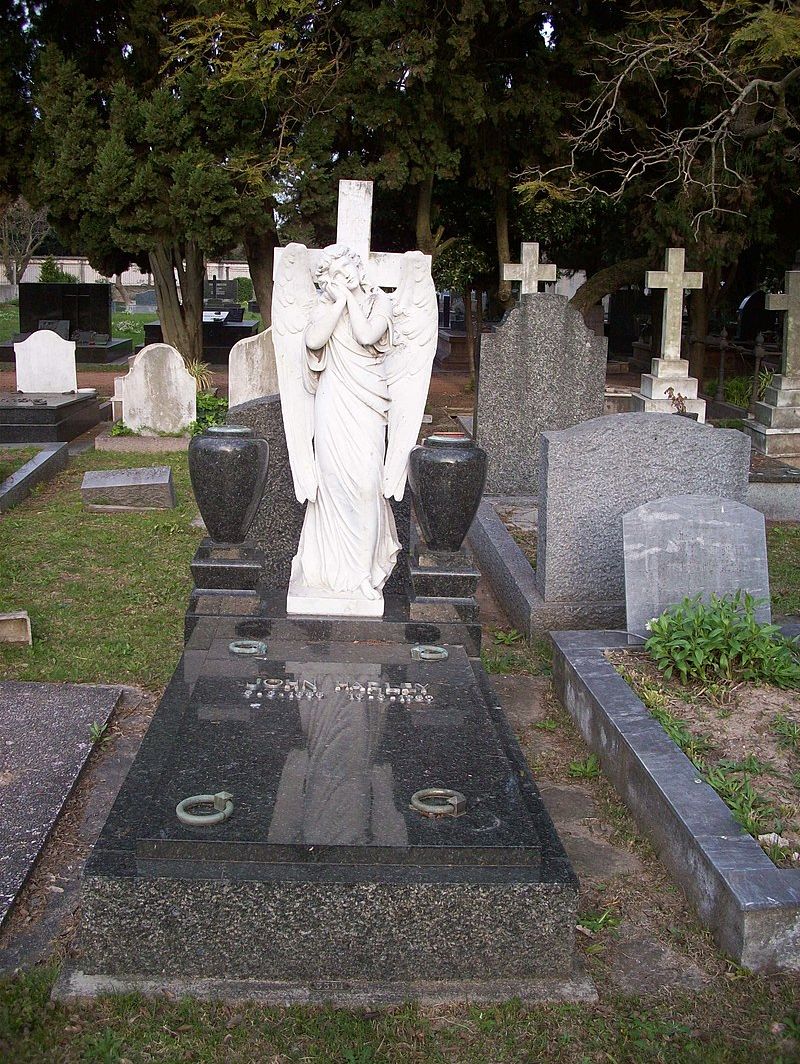John Harley

Even in a cemetery that is kept immaculately there is in the British Cemetery in Montevideo in Uruguay one grave that stands out. It is topped by a standing white angel and is a measure of the esteem, in which the man, Scotsman, whose remains it contains, is still held, more than eighty years after his death. That Uruguay, a country with a population barely half our own, staged and won the first World Cup, then the fourth would without him have been unlikely. That Brazil won it in 1958 and again in 1962 might not have been possible. Yet in his homeland, in Scotland, there is barely a thing even to mark his existence, never mind the extraordinary contribution he has made to South American and thus World football. Never mind a bust there is not even a plaque in his birthplace to match nearby Busby's homage to Tommy Donohoe's contribution to Brazil's game.
The player, the man in question is John Harley, El Yoni. He was born in 1886 in a but 'n ben in Braehead in Cathcart, then a village now a suburb of Glasgow. Walk up from the Old Smiddy pub, cross the Cart via the wee Snuff Mill Bridge and follow the road up to the first crossroads, look left and the houses to the right, replacing those that stood there a century and a bit ago, mark the spot. But his childhood was seemingly not without problems. Census records seemed to have him in 1891 aged four as a patient in the Mount Florida Deaf and Dumb Institution. In fact, further research by one of our members, Mandy Higgins, shows him, for reasons unknown, as a patient still but in the local Victoria Hospital. Moreover, his Cathcart-born father, James, is by then, whilst still living at Braehead, with four older children and working as an iron/turner/mechnical engineer, having previously been a fruit-merchant in The Gorbals, a widower. That is before moving by 1901 to Holmhead Crescent still in Cathcart, another sister and John now back at home, he known to have been schooled in the village and at fifteen working as a grocer's boy. The background seems to have been that James's wife, Carmunnock-born Isabella, had died of bronchitis and heart-disease aged just forty-two again at Braehead in 1888, John aged just two.
James Harley would die, it seems, in 1925. John Harley may well have returned home briefly on his death but in the meantime he had firstly trained as railway mechanic/draughtsman, probably at the Springburn works in Glasgow. It seems likely that was where he honed his football too. The area had several good teams. And from there he then found work initially not in Scotland but on the British-, indeed Scottish-owned railways in Argentina. He seems to have first sailed aged just twenty for Bahia Blanca south of Buenos Aires in 1906, come home briefly and returned in 1907, this time to Buenos Aires (BA) itself. There, whilst working now for the Buenos Aires Western Railway, he began playing for its team, Ferro Carril Oeste (FCO), which exists to this day in the country's second division. Alongside him was a James Buchanan, possibly the same one, who in defeat by Renton played for Cambuslang in the 1888 Scottish Cup Final. He previously in Montevideo had also turned out for the Central Uruguayan Railway Cricket (CURCC)club team. It was clearly looking for new talent. It would not take the Uruguayan title that year. And in a FCO-CURCC friendly played in BA Harley was spotted, head-hunted, made a job offer and in 1909 crossed the River Plate never to look back.

Harley would work until retirement as a draughtsman for the Central Uruguayan Railway. He had also on arrival rapidly assumed the captaincy of its football team. And with that he began to introduced the way of play he knew, the passing-game based but adapted for local conditions with him at centre-half, the Scottish, attacking centre-half. It proved a revelation, soon adopted by other clubs, and then the national team, of which he too became an integral part. In the process the distinctive "Uruguayan" style was created, for which he was lauded and continues to be so. In 1951, by when he had married, had a family, himself integrating fully, his son becoming a well-known Montevidean architect, and fully nine years before his passing, he was awarded a testimonial club match at Uruguay's national stadium. Forty thousand attended.

However, John Harley has a further legacy. Although he was not on the field at the first playing in 1916 of the South American Championship, it taking place in Argentina with the host country, Uruguay, Brazil and Chile represented, in the match between Uruguay and Chile the former was accused by the latter of including "Africans". Uruguay did include Black players, and would insist on doing so. Indeed one, Isabellino Gradin, the grandson of slaves, finished as the tournament's top scorer. But it had been John Harley, who had first integrated Black players into the Penarol team and therefore the Uruguayan game based on their talent not their colour. One, Juan Delgado, would even be groomed to replace the ageing Harley in the Penarol team. Thus in his adopted country not only Harley's style of play became the model but also his approach to race the norm, one which was to extend to the rest of the continent. In 1916 Brazil could play Friedenreich. In 1958 it gave us Pele.
Birth Locator:
1881 - Braehead, Cathcart, Glasgow (Map)
1881 - Braehead, Cathcart, Glasgow (Photo)
Residence Locator(s):
1891 - Mount Florida Deaf and Dumb Institution, Prospecthill Road/Victoria Hospital, Glasgow
1901 - 2, Holmhead Crescent, Cathcart, Glasgow
Grave Locator:
British Cemetery, Montevideo, Uruguay
Ground Locator (1909):
and
Other Sources:
Club Atletico Penarol, Uruguay
Back to the Upper White Cart Trail
or the SFHG Home page